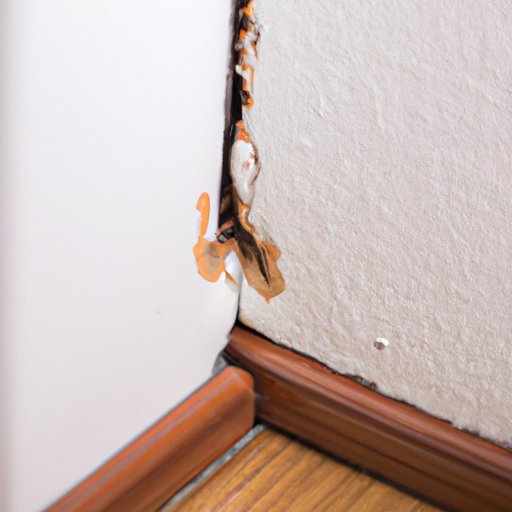Introduction
Termites are small, winged insects that live in colonies and feed on cellulose found in wood and other plant material. They can be devastating to homes, eating away at the structure and weakening foundations. It’s important to know how to identify and get rid of termites in your home before they cause irreparable damage. Here’s an in-depth guide to help you do just that.

Inspecting Your Home for Signs of Termites
The first step in getting rid of termites is to inspect your home for signs of infestation. Start by looking for visible signs such as discarded wings, mud tubes, or piles of sawdust-like droppings near the base of walls or around window frames. You should also check areas where moisture collects, such as around plumbing fixtures, air conditioners, and gutters.
Sealing Cracks and Crevices
Once you’ve identified any potential entry points, it’s important to seal them off. Check the foundation of your home for any cracks or gaps, and fill them with mortar or caulk. Pay special attention to areas around windows and doors, as these are common access points for termites.
Replacing Damaged Wood
If you find any wood that has been damaged by termites, it’s important to replace it immediately. Inspect any wood furniture or structural elements for signs of damage such as hollow spots or frass (sawdust-like droppings). If the damage is severe, you may need to replace the entire piece. When shopping for replacement wood, make sure to choose pressure-treated wood that is resistant to termites.

Treating Infested Wood with Borates or Other Insecticides
In addition to replacing damaged wood, you may also need to treat infested wood with borates or other insecticides. Borates are natural compounds that are toxic to termites and other insects. They are usually applied as a dust, spray, or foam, depending on the area of infestation. Other types of insecticides are also available, but they are more toxic and should only be used as a last resort.
Installing a Continuous Chemical Treatment System
One way to ensure long-term protection from termites is to install a continuous chemical treatment system. These systems involve drilling holes around the perimeter of your home and injecting a liquid insecticide into the soil. The insecticide forms a barrier that prevents termites from entering your home. This type of system typically requires professional installation, so it’s best to consult an expert before proceeding.

Trapping and Removing Termites Using Baits and Bait Stations
Baits and bait stations are another effective way to trap and remove termites from your home. These traps are filled with an attractant that draws the termites in, and then they are killed with an insecticide. The bait stations can be placed around the perimeter of your home or in areas where you suspect an infestation.
Calling an Exterminator
If you’ve tried the above methods and they haven’t worked, it may be time to call an exterminator. A professional will be able to assess the extent of the infestation and recommend a course of action. They may suggest fumigation or a long-term solution such as installing a chemical treatment system.
Conclusion
Termites can cause serious damage to homes, so it’s important to take steps to prevent and get rid of them as soon as possible. Inspect your home for signs of infestation, seal off any cracks or crevices, replace damaged wood, and consider using baits or traps to remove termites. If all else fails, contact a professional exterminator for assistance.


